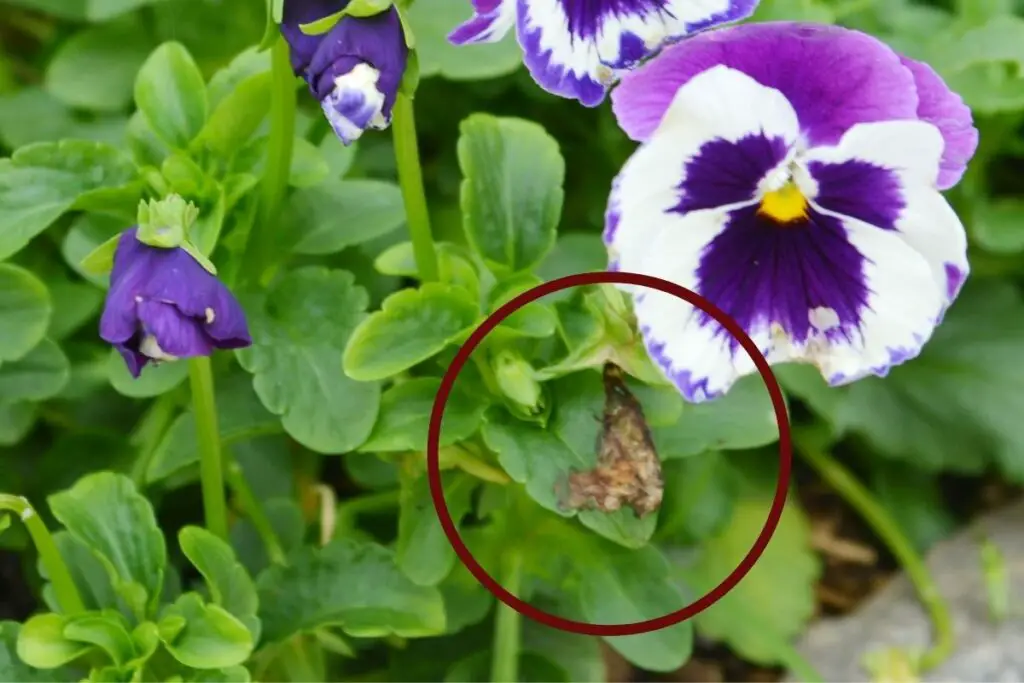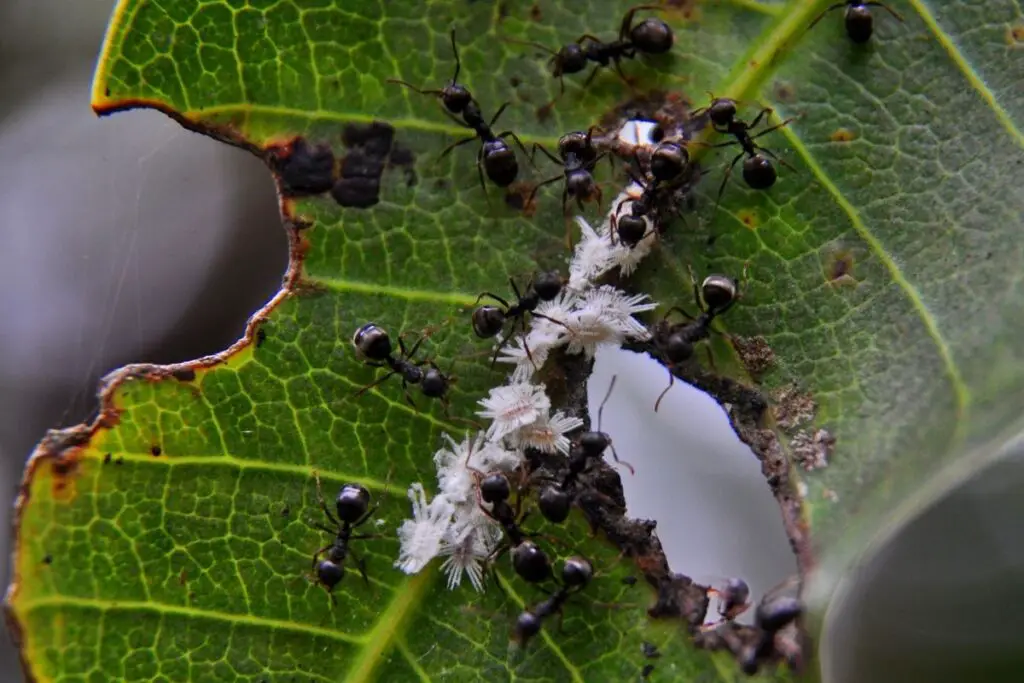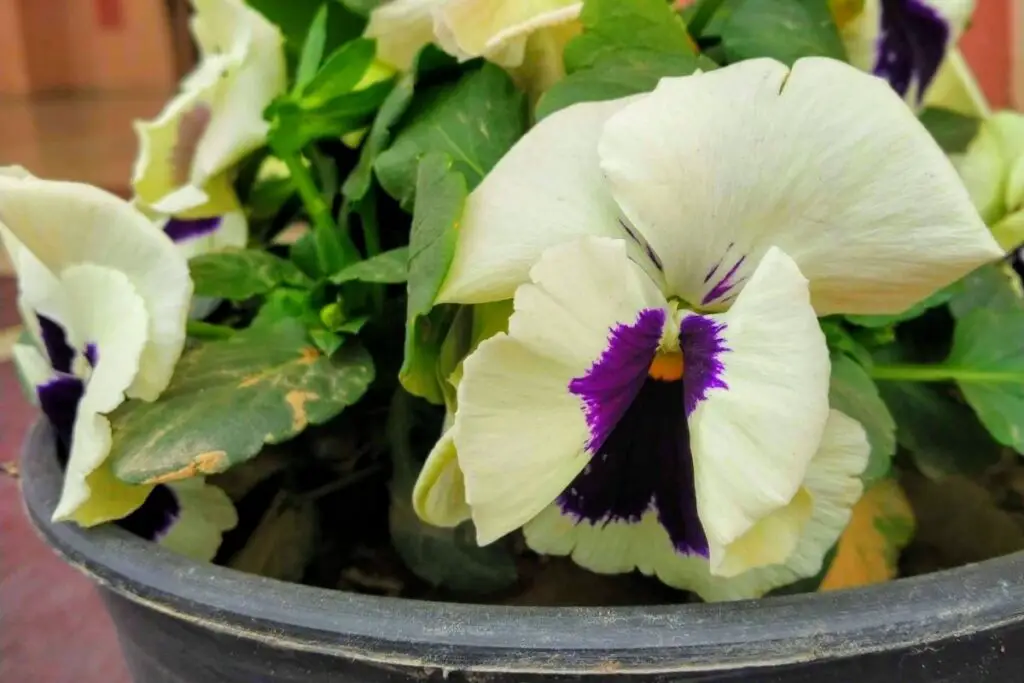Pansies are popular flowers seen in most outdoor gardens in the modern-day. However, you cannot expect your pansies to thrive straightaway. There can be some problems with your pansies if they don’t get enough attention.
Among all other problems, one problem in the pansy plants is the brown spots or browning of leaves. So, in today’s article we shall learn why are your pansies leaves turning brown and how can you fix the same?
Anthracnose, bacterial leaf spots, and pest infestation are primary causes of brown leaves and brown spots in pansies. Isolate the plant and look out for other symptoms to identify the exact problems. Once identified, take necessary steps to fix the problem and prevent further browning of leaves.
The problem of brown leaves mostly happens when your pansies are in unfavorable conditions. You need to be patient with your plants and take good care of them. Neglecting them will only damage the plant more and more.
In today’s article, we will discuss these diseases, the reasons for them, and how to fix the problems and prevent them from further reappearance.

Identifying the browning in pansies
When your pansy is experiencing any problem, they show signs. When you see signs like brown spots on the leaves or stem of your pansies, it means there are some deep and severe problems, and it is time for you to take immediate steps and treat your pansies.
Take a look at the parts turning brown, the shape of the browning, and how it is progressing. Then try to detect the actual problem and treat them as needed.
Now, let us discuss the problems that cause the browning of the pansy leaves.
Anthracnose
This is a common disease seen commonly in the pansies. It is caused due to a fungus species named Colletotrichum. It causes browning of the pansy leaves.
It sometimes starts with cream-colored spots. Later on, when it progresses, it creates a ring pattern on the surface of the leaves.
The dark brown color is seen along with elongated lesions. On the petals, the lesions turn dark brown in the margins.
Treatment
- The first step to treat the problem is to remove the affected leaves. Prune out all the brown and spotted leaves.
- The next thing to do is avoid overhead watering. This means, instead of watering the pansies from the top, water close to the soil.
- You might want to apply a layer of mulch around the plants. This will help prevent the fungus from spreading from the soil to the leaves and the other parts of the plant.
- If your pansies are infected severely, you can use a fungicide to treat the disease.
- Correcting the disease is not your hands. But you can treat the disease and bring your plant back to normal if you follow the steps mentioned above.
Looking for gardening supplies? We have tested 100's of products before recommending them to you guys. Check out our best pick below:
| Image | Gardening Supplies | Best Price? |
|---|---|---|
 Top
Top Top
Top | Raised Garden Bed Kit | Check On Amazon |
 | XLUX Soil Moisture Meter, Plant Water Monitor, Soil Hygrometer Sensor for Gardening, Farming, Indoor and Outdoor Plants, No Batteries Required | No Results |
 Top
Top Top
Top | 82 Pcs Garden Tools Set and Extra Succulent Tools Set | Check On Amazon |
 | Joeys Garden Expandable Garden Hose with 8 Function Hose Nozzle, Lightweight Anti-Kink Flexible Garden Hoses, Extra Strength Fabric with Double Latex Core, (50 FT, Black) | No Results |
 Top
Top Top
Top | Dual Chamber Compost Tumbler | Check On Amazon |
 Top
Top Top
Top | Sunnyglade Plant Stakes | Check On Amazon |
 Top
Top Top
Top | Organic Cold Pressed Neem Seed Oil | Check On Amazon |
 Top
Top Top
Top | Mighty Mint Gallon :-Insect and Pest Control Peppermint Oil | Check On Amazon |
 Top
Top Top
Top | Scotts DiseaseEx Lawn Fungicide | Check On Amazon |
 Top
Top Top
Top | Jacks Classic 20-20-20 All Purpose Fertilizer | Check On Amazon |
 Top
Top Top
Top | 30,000 Seeds Pollinator Attracting Wildflower Mixture | Check On Amazon |
 Top
Top Top
Top | Survival Vegetable Seeds Garden Kit-Over 16,000 Seeds | Check On Amazon |
Cercospora Leaf Spot
Cercospora Leaf Spot is another kind of disease caused by the fungi species named Cercospora species. It is caused mainly by the landscape beds. You can identify them with brown blotches on the surface of the leaves.
This disease mainly occurs during the cold season. The lesions start combining into a larger necrotic area. The favorable conditions for these fungi are cold weather and moist leaves. They grow in a damp environment.
Treatment
- To save your plant from this disease, remove all the infected leaves from the plant.
- Avoid overhead watering. These fungi sit mainly on the surface of the leaves. So it is better to ignore overhead watering that will help them spread to other leaves.
- You must add a layer of mulch to the soil that will help prevent the fungi from spreading into the soil.
- In severe conditions, use fungicides to treat the problem. Fungicides containing thiophanate-methyl will work well to fix the problem. Use them once every 1-2 weeks until the plant recovers.
Gray mold
Also known as Botrytis Blight, gray mold is a fungus infection caused by the fungi species named Botrytis. Gray mold causes dark brown spots on the leaves, stems, and flowers of the pansy plant.
It first infects the leaves and then slowly spreads into the stems and other parts of the plant.
During moist conditions, the infection increases, and the dark spots spread and turn the whole leaves into dark brown color. Damp weather is favorable for their survival and further spread.
Treatment
- Remove the infected leaves.
- Stop watering your pansies for some time. Try to keep the surface of the plant dry.
- Avoid overhead watering as the damp leaves are the ideal place for their stay and survival.
- Allow your plant to get enough airflow. Keep enough in between your plant for good ventilation.
- Let the soil dry up, and then you can water your plant. Maintain proper gap in between the watering.
- Keep your flower bed clean. Remove all the infected plants.
- Fungicide is not a mandatory option for this disease. An environment-friendly approach is good enough to treat gray mold. Sometimes, your plant will recover once they get back to dry conditions.
Pests

Not all pests cause brown spots on the pansy leaves. Some pests cause chlorosis or yellowing of leaves or white spots.
One of the common pests found in pansies is the two-spotted spider mites. These pests prefer hot and dry weather.
You will notice a sign of a wound that looks like a puncture made on the leaves with a pin. This wound spreads and creates brown spots on the leaf surface, probably due to these spider mites.
Treatment
- Whenever you see such signs, observe your plant well and try to diagnose the cause of the problem.
- If it is a pest attack, remove the affected leaves first and give your plant a good wash. Keep the force of water at such speed that the pests get washed away.
- If the attack is severe, you will have to give a close look at the plant and see whether they have formed any web in the leaves or not. You can clean them with clean cotton. After that, you can wash your plant.
- You can apply neem oil to keep your plant safe from any further pest attack. This oil will also help the plant to recover.
- You can also use insecticide soap or a good pesticide made for pansies to treat the pest problem.
Ramularia Leaf Spot
Ramularia leaf spot is another issue that results in brown spots on the pansy leaves. This disease is caused by two types of species, namely, Ramularia Lactate and Ramularia Agrestis.
The symptom of this disease can be seen mainly in older leaves in the lower portion. Lactate species create a purplish-brown spot on the leaves, and the spot grows eventually.
Agrestis species create yellowish-brown color spots in the leaves, and these multiple spots combine and create a light color on the surface of the leaves.
Treatment
- Prune the affected leaves with scissors.
- Avoid planting in the same affected site repeatedly.
- Keep space around your plant for enough air circulation.
- In the condition of severe infections, use fungicides once in 1-2 weeks until it recovers.
- Check your plant before you buy them.
Reasons behind browning in pansies
All the diseases that result in the browning of your pansy plants have some common reasons behind them. These are:
- Overwatering
- Lack of airflow
- Poor drainage
- Low light
All the factors mentioned above create a damp environment that allows the fungi and pests to thrive and spread.
Some other reasons can include intense sunlight, underwatering, or over-fertilization.
How to prevent browning in pansies?

It is best to prevent the browning in pansies by making sure of the following points:
- Pansies will require 1 inch of water during their growing season. However, you must not overdo it as that will make the soil soggy.
- Reduce the watering when it rains; otherwise, you’ll end up overwatering the pansies.
- Do not plant the pansies too close to each other as that will restrict airflow around the plants.
- If you use a heavy soil mix, the pansies will develop diseases as they don’t enjoy soggy soil.
- Add organic and chunky matters to make the soil well-draining and light. You can add peat, sand, compost, etc.
- Pansies enjoy full to partial sunlight. If they don’t receive adequate light, the soil will not get dry, creating an ideal environment for bacterial and fungal growth.
- Try to not expose the pansies to harsh afternoon sunlight, especially during the warmer months, as that can scorch the pansy leaves and turn them brown.
- If you don’t give enough water to your pansies, the soil will get bone dry and the leaves will develop dry and brown spots due to lack of water. Water whenever the top layers of the soil bed get dry.
- Pansies require a well-balanced high nitrate fertilizer twice a month during the growing season. If you fertilize more frequently or give a high dose, the plants will develop brown spots, brown tips on the leaves due to excess salt build-up in the soil.
Final words
When you are growing any plant in your garden, you need to take care of them. Or else, you will notice signs of problems in your plants.
If you neglect your pansies, they will become vulnerable to diseases, and if you do not take immediate steps against those diseases, the diseases will kill your plant.
Water your plant well and maintain the gaps in between the watering. Let the soil dry before watering again.
Observe your plants daily. Keep a note of the daily changes in your plant. If there are any brown spots, try to figure out the problem. This will help you detect the problem early and take immediate steps to cure your plant.
Keep enough space in between the plants to give them good airflow. This will prevent the spread of diseases.
If your pansies are having a hard time due to any disease, try to adopt environment-friendly measures like washing the plant well, providing enough air, water, and sunlight, and applying horticulture oils like neem oil. It is one of the best solutions to cure the plant.
Use pesticides and fungicides after these environment-friendly approach fails to work and the problem increases and becomes severe. Keep them as the last option for treatment.
Ref: The University of Arkansas, Britannica, Utah State University, Wikipedia, The University of Georgia, The Pennsylvania State University, The Royal Horticultural Society.
